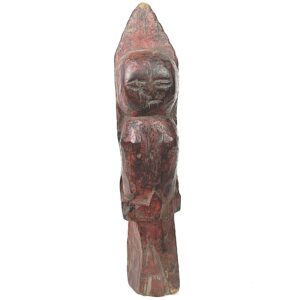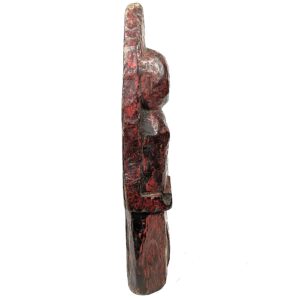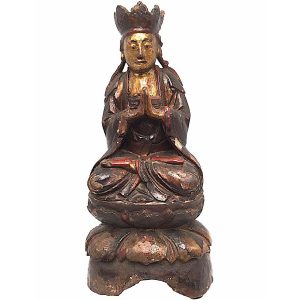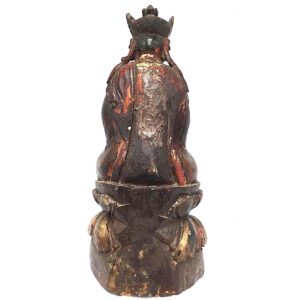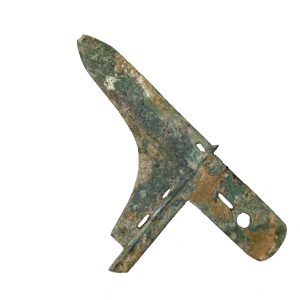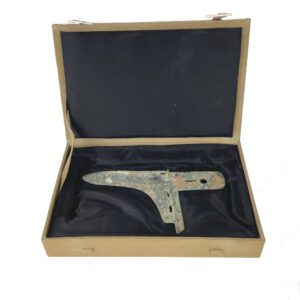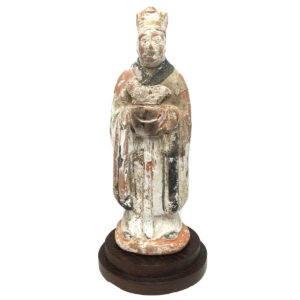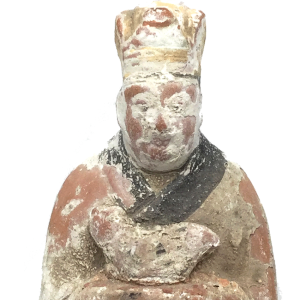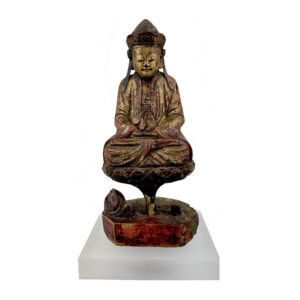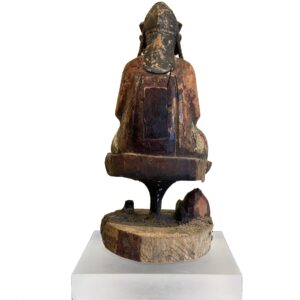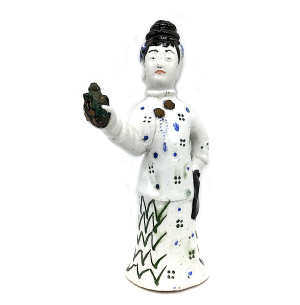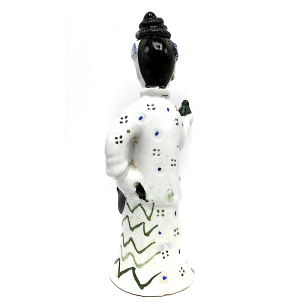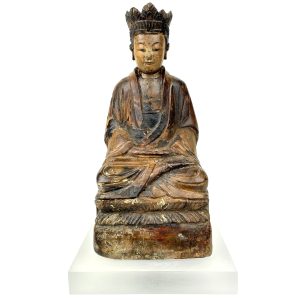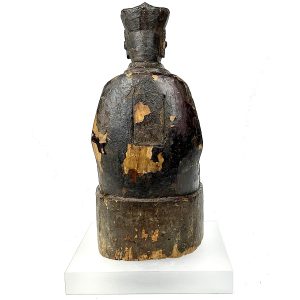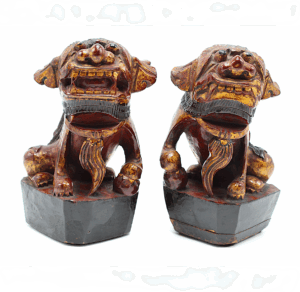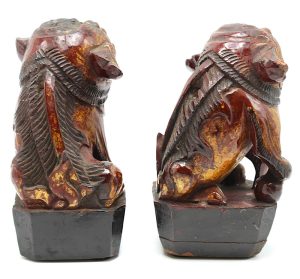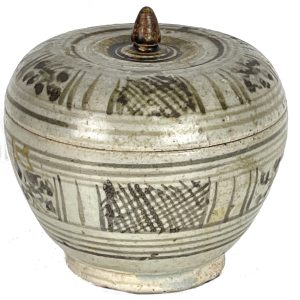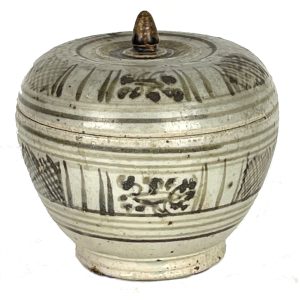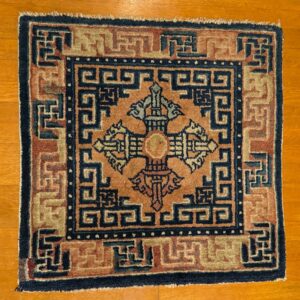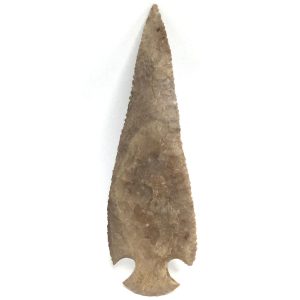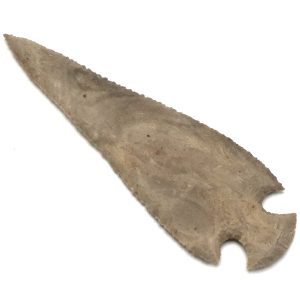Showing 61–72 of 89 results
-
Sale!


$85.00 Original price was: $85.00.$55.00Current price is: $55.00.
Ht: 9..5 ” W: 2″ D:1.5 ” | FREE SHIPPING WITHIN CONTINENTAL U.S.
Antique carving of a Devi (Sanskrit: divine) probably a child’s toy and and protective item. Tikka on forehead, ample breasts – a wish for fertility with a shiny patina from use.
-
Sale!


$625.00 Original price was: $625.00.$425.00Current price is: $425.00.
H: 8.25″ W: 3.125″ D: 2.25″ | FREE SHIPPING!
This Kitchen God and his Wife is posed as streamlined virtual mirror-images and fashioned with a general quality relying on paint rather than deep carving for details. They sit on backless chairs on a plinth, with simplified gold officials’ robes with long color sashes, and well-carved black and gilt head gear. The wife’s face is smooth, generalized and the male face has a more deeply carved surface and painted highlights.
-
Sale!


$475.00 Original price was: $475.00.$350.00Current price is: $350.00.
H: 11.6 ” W: 5.3 ” D: 4.25 ” | FREE SHIPPING WITHIN CONTINENTAL U.S.
This provincial Guanyin made for a home altar sits in anjali mudra. Portrayed as humble, approachable, she wears a 5-lobed diadem, hair in a chignon with braids and modest robe seated on a waisted lotus throne with stacked lotuses.
-
Sale!


$495.00 Original price was: $495.00.$395.00Current price is: $395.00.
H: 4.375″ W: 7.375″ D:.1875″ | FREE SHIPPING WITHIN CONTINENTAL U.S.!
This ancient bronze ge dagger-axe is a true glimpse of the changes in military history and would be a great addition to a collection of weapons throughout the ages. Widely produced and used in the Han it virtually disappeared after introduction of chariots and tightly military formations.
-
Sale!


$395.00 Original price was: $395.00.$295.00Current price is: $295.00.
H: 3.375″ W: 2.75″ D: 2.5″ | FREE SHIPPING WITHIN CONTINENTAL U.S.
One of a set of 12 Zodiac attendant figures holding a small calendar animal of the year represented as part of mingqi placed in the graves of deceased.
-
Sale!


$695.00 Original price was: $695.00.$525.00Current price is: $525.00.
H: 10″ W: 5.5″ D: 4.5″ | FREE SHIPPING WITHIN CONTINENTAL U.S.
Rare provincial consecrated carving of Nanhai Guanyin on a lotus, representing purity of the mind, above a fish symbolizing her power to help beings sail through sea of suffering separating mortal world from the Western Paradise.
-


$265.00
Ht: 8.5” W: 5” D: 3” | FREE SHIPPING WITHIN CONTINENTAL U.S.!
This small charming Qing or early Chinese Republic teapot is in the form of an attendant, the arm she holds up imitates the spout of a teapot, the left arm arches to touch her waist suggesting a teapot handle and the hair is atop her head with flowers is a removable lid for pouring tea inside. She typical attendant clothing, a high mandarin collared jacket draped over a flaring skirt that is the piece’s base.
-
Sale!


$695.00 Original price was: $695.00.$550.00Current price is: $550.00.
Ht: 9.5″ W: 4.5″ D: 3.75″ | FREE SHIPPING WITHin Continental U.S.
Rare provincial home altar consecrated gender neutral Guanyin is in meditation on lotus throne wearing five-lobed crown symbolically representing the 5 Dyhani Buddhas in the Vajrayana Tantric tradition.
-
Sale!


$395.00 Original price was: $395.00.$350.00Current price is: $350.00.
H: 5.75″ W: 3.25″ D: 2.75″ | SOLD
Each of this whimsical gold and red-burgundy lacquered pair of male fu lions sits erect on a high pedestal heads thrown back with flaring ears, bulging eyes, decorative stylized manes and a small bushy tail. Their spirituality is displayed by the pair silently emitting the blessed mantra “aum”: the open mouthed lion forming an “au,” and the other completing it with a closed mouth to form “mmm.” The workmanship on these pieces is masterful, although rustic and provincial, and they are rare with their Buddhist symbolism and because most pairs of fu lions pairs were lost during China’s modernization.
-


$295.00
Ht: 4.25” Dia: 4.625” | SOLD
Produced in Thai kilns in the 14th to 15th centuries, Sawankhalok glazed stoneware lidded bowls were distributed through southeast Asia along with a variety of larger and smaller items. Lidded bowls like this were used to store many things, especially spices, powders and cosmetics, betel nut chewing materials, and medicine. This bowl rests on a thick foot, has a lid with a brown lotus bud handle and covered with decorative panels of underglaze brown crosshatch and vegetal scrolls.
-
Sale!


$375.00 Original price was: $375.00.$285.00Current price is: $285.00.
25″ Square
This vibrant carpet can be used as aid for meditation to sit on or hung on a wall.
-


$495.00
Ancient spearpoints with this triangular blade called triangular lanceolate projectile spear point were found under multiple feet of sediment about 40 miles from Austin, Texas are revising ancient American history as they are believed to be the oldest weapons ever found in North America. Considerably older than those made by the Paleoamerican Clovis culture, formerly…
End of content
End of content

